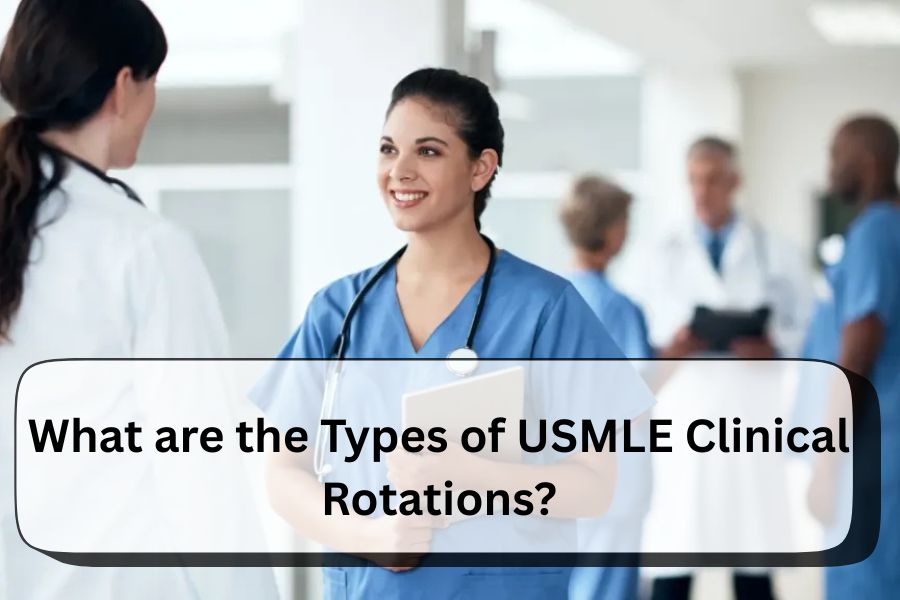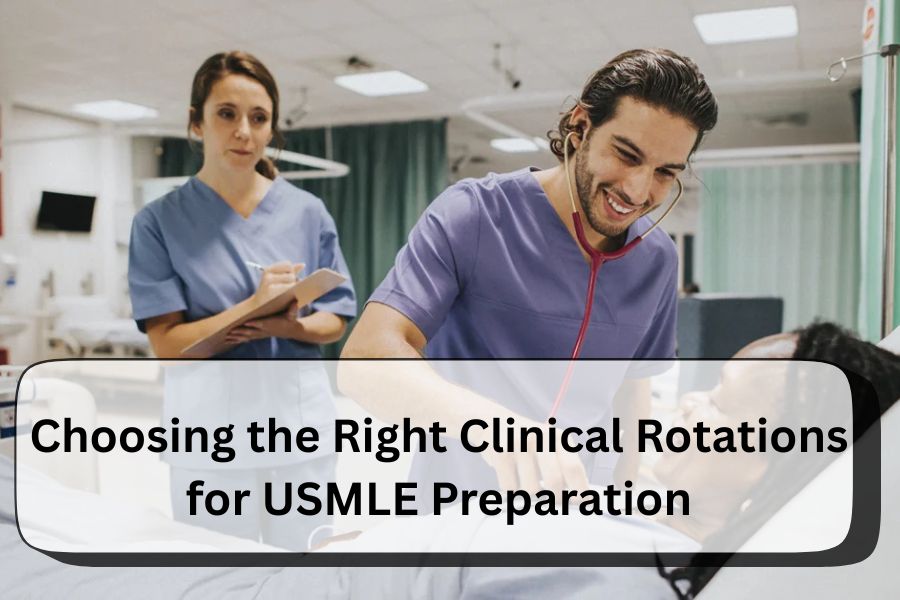
What are the Types of USMLE Clinical Rotations?
If you’re preparing for the USMLE (United States Medical Licensing Examination), one of the most crucial parts of your journey is completing clinical rotations in the U.S. healthcare system. These experiences not only strengthen your knowledge and patient-care skills, but they also boost your residency application by showing real-world exposure.
But what exactly are the types of USMLE clinical rotations, and how do they differ? Let’s break it down.
1. Core Clinical Rotations
Core rotations are the mandatory clinical experiences every medical student must complete, usually during the third year of medical school. These provide the foundation of clinical training and cover the main specialties you’ll need exposure to before residency.
Typical core rotations include:
- Internal Medicine
- General Surgery
- Pediatrics
- Obstetrics and Gynecology (OB/GYN)
- Psychiatry
- Family Medicine
💡 Why they matter: Core rotations are often required for graduation and are considered essential for building clinical competency. Residency program directors place significant value on these experiences.
2. Elective Clinical Rotations
Elective rotations allow you to explore subspecialties or areas of interest beyond the core requirements. These are usually taken during the fourth year of medical school and can be tailored to your career goals.
Examples of elective rotations include:
- Cardiology
- Neurology
- Emergency Medicine
- Nephrology
- Dermatology
- Radiology
💡 Why they matter: Electives give you the chance to show interest in a specialty, gain letters of recommendation (LoRs), and demonstrate commitment to a residency program.
3. Sub-Internships (Sub-I) or Acting Internships
A sub-internship is a more advanced elective rotation where you take on responsibilities similar to an intern (first-year resident). You’ll be more directly involved in patient care, charting, and decision-making, under supervision.
💡 Why they matter: Sub-Is allow residency programs to assess how well you can handle responsibility. They are highly recommended for students applying to competitive specialties.
4. Externships
Externships are hands-on rotations designed for international medical graduates (IMGs) who have already completed medical school. Unlike observerships, externships allow you to interact with patients directly under supervision, which strengthens your clinical skills and US residency application.
💡 Why they matter: Externships are often considered the closest experience to a residency for IMGs. They also help build U.S. letters of recommendation.
5. Observerships
Observerships are shadowing experiences where you observe a practicing physician but do not directly interact with patients. These are typically chosen by IMGs who are no longer eligible for student-level rotations.
💡 Why they matter: While not hands-on, observerships still provide valuable insight into the U.S. healthcare system and can help you network for letters of recommendation.
6. Research Rotations (Optional)
Though not a direct clinical experience, some students and IMGs choose research electives in academic hospitals. These allow you to participate in ongoing studies, gain publications, and strengthen applications to research-heavy residency programs.
💡 Why they matter: Strong research credentials can set you apart, especially in specialties like neurology, radiology, or internal medicine subspecialties.

Choosing the Right Clinical Rotations for USMLE Preparation
When deciding which rotations to pursue, consider:
- Residency specialty goals (pick electives that align).
- Hands-on vs observerships (hands-on is generally stronger for IMGs).
- Letters of Recommendation opportunities (aim for U.S.-based LoRs from physicians in your desired specialty).
- Timing (completing rotations before applying to residency maximizes their impact).
Final Thoughts
Clinical rotations are more than a graduation requirement — they are your gateway to residency in the U.S. By carefully planning your core, elective, externship, and observership experiences, you’ll build the knowledge, skills, and credentials to stand out in the residency match.
👉 At Medical Student Rotation, we help medical students and IMGs arrange high-quality clinical rotations across U.S. hospitals and clinics. Whether you need core, elective, or hands-on externships, we ensure you get the right experience to strengthen your USMLE preparation and residency application.
